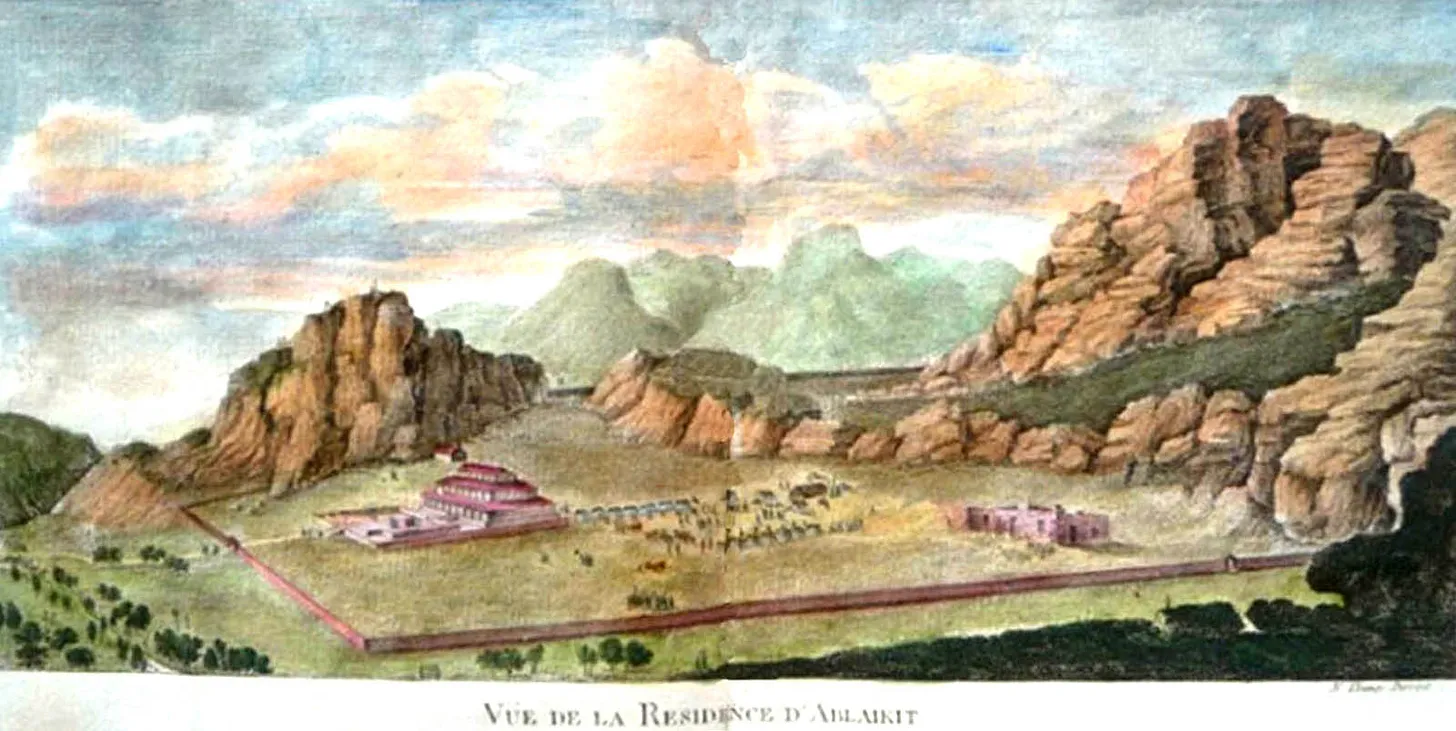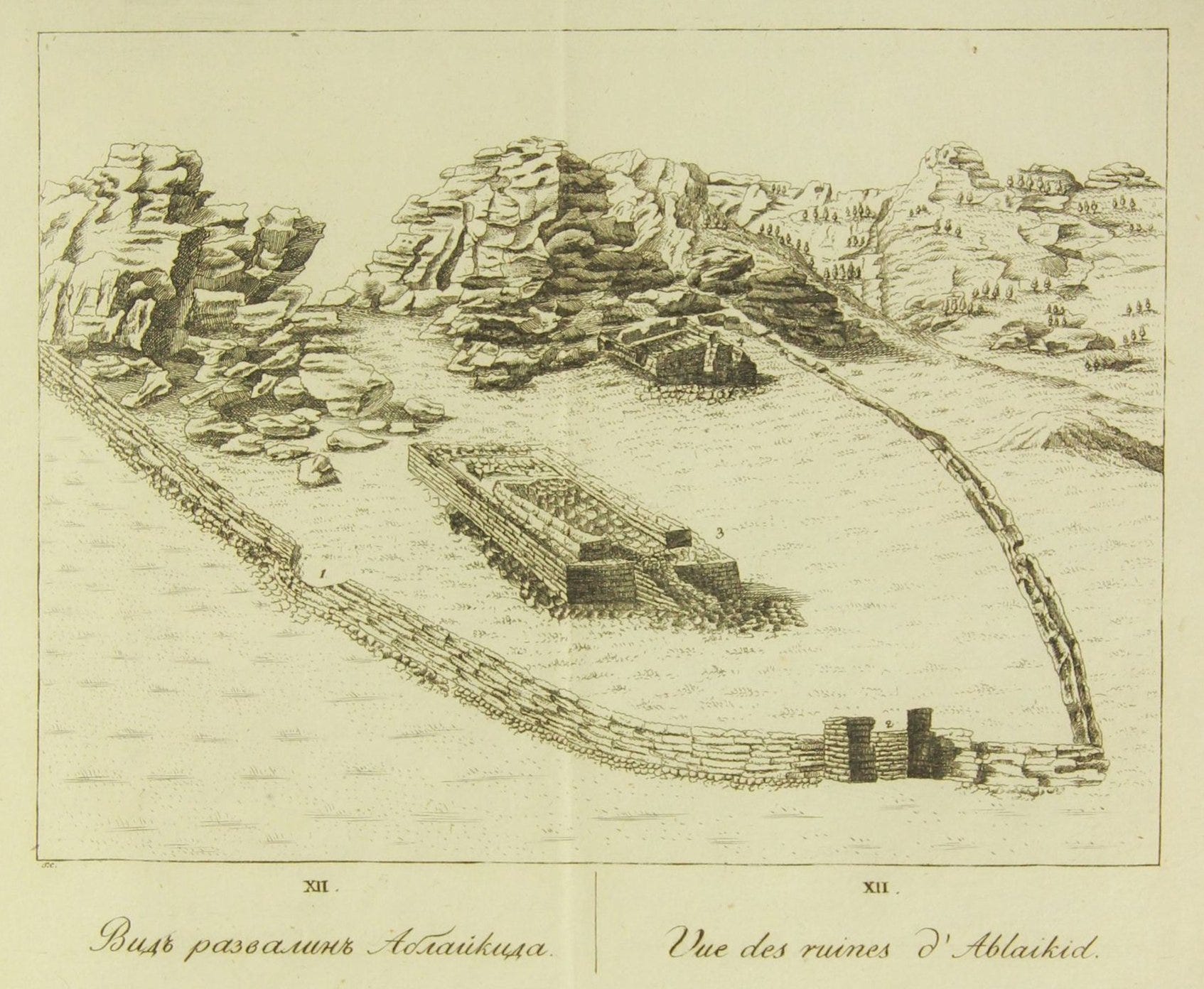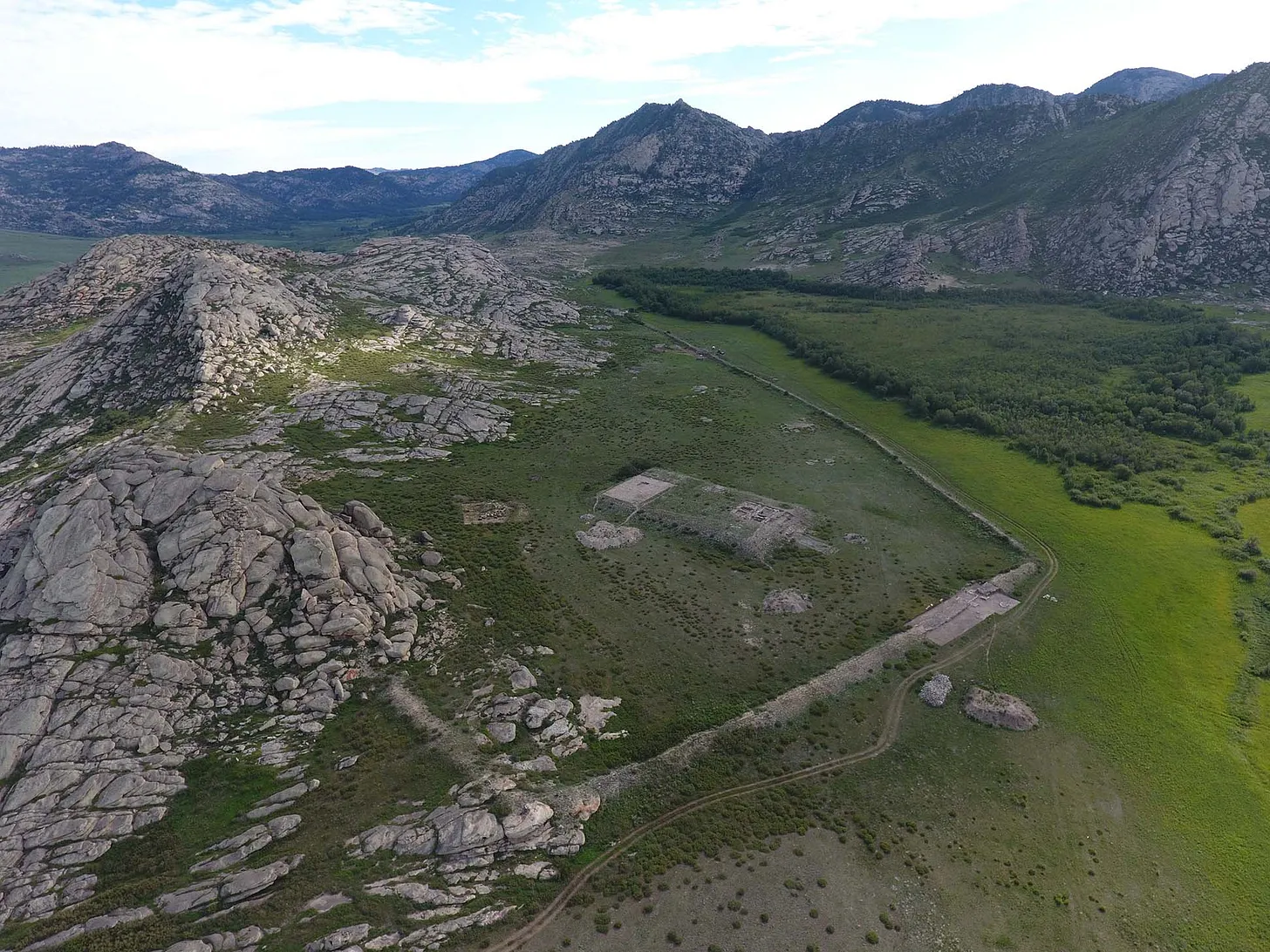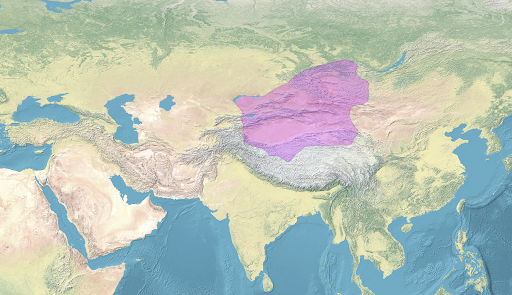 View of Ablaikit by Peter Simon Pallas, 1794 from Library of Alexandria Ultima.
View of Ablaikit by Peter Simon Pallas, 1794 from Library of Alexandria Ultima.The thrill of discovery is often experienced by users of BDRC. Monastics and academics of all ranks enjoy telling us their aha moments using BDRC's digital library – when they find a needed text they didn't expect to be available, or when they come upon a text that they didn't know existed but is perfect for their study or teaching. It's a big part of the magic of BDRC.
In the same way, BDRC team members also love the thrill of discovery and seeking it out helps grow the archive. In recent weeks BDRC's CTO, Mr. Élie Roux, played a major role in identifying and digitizing a Tibetan text with a remarkable history. The text in question is a fragment of a 17th century Kangyur produced by the Dzungars, a Mongol community that maintained the Ablaikit Buddhist monastery in what is now Eastern Kazakhstan.
This Kangyur is doubly important. It is both 1) a relic of a Mongol tribe that was a hugely influential patron of Tibetan Buddhism before being genocidally exterminated by the Qing Dynasty, and 2) one of the very first Tibetan language texts to reach Europe and be closely studied. Indeed this Kangyur was likely the model for one of the most impactful Tibetan typefaces created in Europe and used in many early publications about Tibetan language and Buddhism. Despite its pedigree, this particular collection had been largely forgotten about, partly because the surviving fragments had never been digitized and published online, until now.
 A page from the Ablaikit folios at the Staatsbibliothek zu Berlin.
A page from the Ablaikit folios at the Staatsbibliothek zu Berlin.The discovery happened in the context of Élie Roux's research on the history of Tibetan Typesetting. One important milestone in this history is the creation in Berlin of a beautiful Tibetan metal type by Ferdinand Theinhardt, commissioned for the publication of the English translation of Jäschke's dictionary in 1881.
Élie takes up the story: "I was wondering what the model was for the type, so I investigated a sentence in Theinhardt's autobiography where he says that he took inspiration from a 3,000 years old dice divination manuscript written in silver, in the Royal Library in Berlin. The date is obviously wrong, and a dice divination manuscript written in silver would be very strange… Theinhardt probably could not read Tibetan, so we can't rely on his description of the content, but the material aspect of the manuscript would be right. I contacted Michael Balk and Antje Ziemer who very generously looked at the relevant handwritten catalogs and manuscripts at the Staatsbibliothek zu Berlin, and found only one candidate: a fragment of a canonical text written in silver, that the catalog associates with a (now lost) note by Jäschke. This had to be it!"
 Ruins of the Ablaikit Monastery, Album of views, drawings of buildings and ancient inscriptions of Siberia" – Grigory Spassky, 1818, from The Library of Alexandria Ultima.
Ruins of the Ablaikit Monastery, Album of views, drawings of buildings and ancient inscriptions of Siberia" – Grigory Spassky, 1818, from The Library of Alexandria Ultima. Photograph of the ruins of Ablaikit Monastery from The Library of Alexandria Ultima.
Photograph of the ruins of Ablaikit Monastery from The Library of Alexandria Ultima. After a few sample pictures were sent back, the manuscript felt oddly familiar to Élie. A few days later, it clicked! This manuscript looked like the fragments of the Ablaikit Kangyur presented by Alexander Zorin in a conference in Vienna a few years ago. The provenance of these fragments was not documented in any catalog and they were unknown to Zorin, but he soon confirmed their origin.
With the mystery solved, these new 23 folios now represent about 10% of the documented Ablaikit folios. The resemblance of Theinhardt's type with the Dzungar manuscripts from Sempala (also in Kazakhstan) was also documented in Walravens 2015 "Siberian Manuscripts and the Tibetan Jäschke Type".
The Kangyur from Eastern Kazakhstan is called the Ablaikit Kangyur because it had been housed in the Ablaikit Buddhist Monastery. The monastery was part of the Dzungar Khanate, an empire founded by the Oirat tribe of Mongols. The history of the Dzungar Khanate is fascinating and some suggested readings can be found below for those interested to learn more.
- The scans of the Ablaikit folios can be viewed here on the website of the Staatsbibliothek zu Berlin.
- On the Jäschke / Theinhardt type, see chapter 5 of Tibetan Typeforms by Jo de Bardemaeker (2020,2023)
- Jäschke's Tibetan-English Dictionary / Jäschke, H. A. A Tibetan-English Dictionary, with Special Reference to the Prevailing Dialects can be accessed here in the BDRC archive.
- Theinhardt's autobiography (in German): Erinnerungsblätter aus meinem Leben (1920), relevant passage page 18. Available here in the digital collection of the University Library of the Humboldt-Universität zu Berlin.
- On the Ablaikit Kangyur and its legacy in the West: Alexander Zorin The History of the First Tibetan Texts Acquired by the St. Petersburg Academy of Sciences in the 18th Century in Journal of the International College for Postgraduate Buddhist Studies Vol. XIX, 2015
- A collected volume of recent scholarship on many of the issues raised in this blogpost: "Tibet and the Oirats: The Oirat Legacy and the Origins of Tibetology," special issue edited by Alexander Zorin and Charles Ramble. Revue d'Etudes Tibétaines, no. 71, June 2024
- On the influence of Ablaikit and Sempala manuscripts on the Jäschke / Theinhardt type: Hartmut Walravens, Siberian Manuscripts and the Tibetan Jäschke Type in Zentralasiatische Studien, Band 44, 2015, pp. 179–191
- An extensive and accessible history of the Qing genocide of the Dzungar/Zungar Mongols: Perdue, Peter C. China Marches West: The Qing Conquest of Central Eurasia. Belknap Press of Harvard University Press, 2005
- For those interested in reading about a significant intervention by the Dzungars into Tibetan institutional religion: Townsend, Dominique. A Buddhist Sensibility: Aesthetic Education at Tibet's Mindröling Monastery. Columbia University Press, 2021.
 Map showing the location of the Dzungar Khanate.
Map showing the location of the Dzungar Khanate.




Sorry, the comment form is closed at this time.